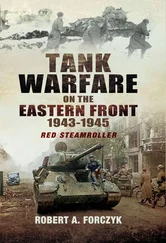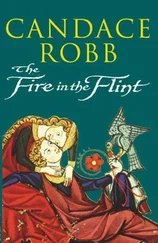The German people were to feel vengeance. But they knew nothing of the crimes against the non-Germans, the friends of Germany who had fought for a federalised Europe, with autonomy and rights of self-determination at their side. The younger generation had been the driving force behind that ‘voluntary’ sacrifice. The Germans were busy with themselves in the immediate years after the war. So it is not to be expected that they were interested in the personal fates of those beyond their borders. Revenge was now the order of the day. When the sons were not present, then the mob vented their spleen on the family members, not only the male members, but female members and their children too.
This applied not only to ‘the man in the street’, but also to the Prince Consort, Prince Bernhard von Lippe of Biesterfeld. He came under the scrutiny of MI5 and the CIA, even during his asylum in England. His past record, i.e. his position with the IG Farben firm, plus being a member of the SS, gave Eisenhower’s staff differences of opinion. An army in exile was formed by Dutch Government officials in London. Prince Bernhard vonder Lippe of Biesterfeld was its commander.
The principal offenders and agitators were those exiled members of the BS and OD, i.e. Ordnungsdienst administrative authorities or public policy officials. Their orders were carried out by uniformed bands of men, with an orange band around their arm and carrying Sten-guns. There were decent but disapproving Dutch police, reserve-officers and former resistance fighters, Prince Bernhard too. But they did nothing to interfere with the shameful atrocities of those mobs on their own people, the political misfits and others. The conservative members of the exiled government in London, in 1943, had enough forethought to form new laws and resurrect old laws, in case of public unrest. At all costs, they wanted to avoid the workings of Communist and Socialist infiltrators/agitators, in the chaos after a possible defeat of Germany, and the possibility of them taking control, although at that time, one could say that they actually supported Bolshevism. Some laws were backdated, and some were changed. For instance, the law on freedom of action, some actions formerly not being punishable offences before 1940 were now an offence, for instance.
Unqualified judges could now sentence Dutch citizens to ten years in a concentration camp. Other judges were given special jurisdiction to give the death-sentence, which had not taken place for centuries in Holland. Sentences included having one’s nationality taken away, having no right to vote, and one could have property/possessions taken away.
The revenge was planned, and former volunteers and collaborators were the targets of unimaginable and inhuman behaviour. Wives of German soldiers, girls who were engaged to German soldiers, or even if they befriended one, had their heads shaved, had swastikas smeared on their foreheads and were then hunted through the streets. The homes of former NSB members had their homes plundered, as were those of any linked associations.
In comparison with the unending flood of literature on the ‘heroic acts’ of the resistance against the Germans, their crimes against their own countrymen were never written about. Virtually nothing was published, for no one dared. One of those who attacked this theme was the Dutch theologist Dr. H.W. van der Vaart-Smit, who interested himself as early as 1949. He wrote a book Kampteostanden 1944—1947, on the atrocities taking place in prisons on political prisoners, all of which were recorded. It was a horror. The foreword to this book was written by Professor G.M. Russell, who states that “The truth of this black chapter in our post-war history should not stay silent, nor be denied”.
One cannot say that this behaviour was spontaneous. It was a merciless and bloody revenge, practised on defenceless people. The ‘crime’ of these people was having been a member of the NSB, or a German sympathiser. In a free thinking society they were now criminals. They were penalised with methods that surpassed the ecclesiastical torture methods of the Inquisition of 1232, in particular on women (page 22 of Dr. van der Vaart Smit’s book). On the next page one can read of other atrocities. The female jailers of those women were no better, maybe even worse than their male counterparts, for all were jail-bait for them. They beat up the prisoners at will, reverting to medieval methods, or locked them for days in cages in which they could only stand. When one of the jailers lit a cigarette, it was used as a method of torture, one of the ‘harmless’ sort (page 33).
On page 34, there is a report on the transport of amputees and the behaviour of guards upon reaching an internment camp. The guards threw the amputees from the vehicle like a load of ballast. One was an eighteen year old who had lost both his legs, and was severely injured. An accompanying nurse lost her temper. She received a bull et in her thigh. Many of those prisoners were psychological wrecks after such experiences and were sent to the Institution for Psychiatry in Franaker. They were treated as demented, not “demented patients”, but to quote one of the treating doctors, as “demented criminals”.
The jailers were members of the shooting clubs. It was “Schützenfest time” and lasted from July to November of 1945, until Canadian troops stopped the massacre of prisoners. Prisoners were murdered at will, or badly injured and then the necessary medical help was withheld. Even stretcher-bearers when help was available were fired upon. Notorious for its system of torture, was the internment camp in Scheveningen. A total of 45,000 Dutch citizens were accused of collaboration, 170,000 of them being interned. Holland had a population of 8.2 million inhabitants at that time.
One could ask, “Are we talking about the same peace-loving Holland that fiercely clung to and defended its neutrality among the nations, but that was more than ready to wage war in this fashion on their own people?” Thousands of individual fates are not known, have never been recorded. Women and girls stayed silent, in fear of reprisals when the sexual crimes against them became known.
When parents were ‘classified’, their children were torn away from them to be put into homes, and they were interned. Visits to their children were forbidden and their contact completely severed. The children of political prisoners were very badly treated in those homes, where they vegetated. As many as 300,000 children were suddenly without parents, and were continually brainwashed that they were the children of criminals. It should be of no surprise that eventually many were ashamed of their own parents. Psycho logical pressure and ill-treatment of those children resulted in many of them becoming ill and sustaining psychological problems.
For the last fifteen years, an association called the “Herkenning Work-group” has existed in Holland, to help children with this dark chapter of their lives. They were the persecuted political sacrifices of discrimination. It remains in existence today. The association had to fight very strong resistance from the administrative authorities. It is only in the last few years that they have become known as a ‘charitable association’, and deemed worthy of support.
When their own people were subjected to this wave of revenge, then how did the German citizen on Dutch soil fair? In the preoccupation of hunting the ‘fou’ and the ‘volunteers’, from the German citizens still to be found in Holland after 1945, 203 were sentenced. Eighteen were sentenced to death, six were executed, six were sentenced to life imprisonment, others received sentences of between three months and twenty years, but none served more than 13 years of their sentences. The forthcoming economic boom, to be found in Germany, played a very large role in this, for Holland was very much dependent on their neighbour. There was an economic boom to be seen on the horizon, and the legendary business-sense of the Dutch soon came to the fore.
Читать дальше












